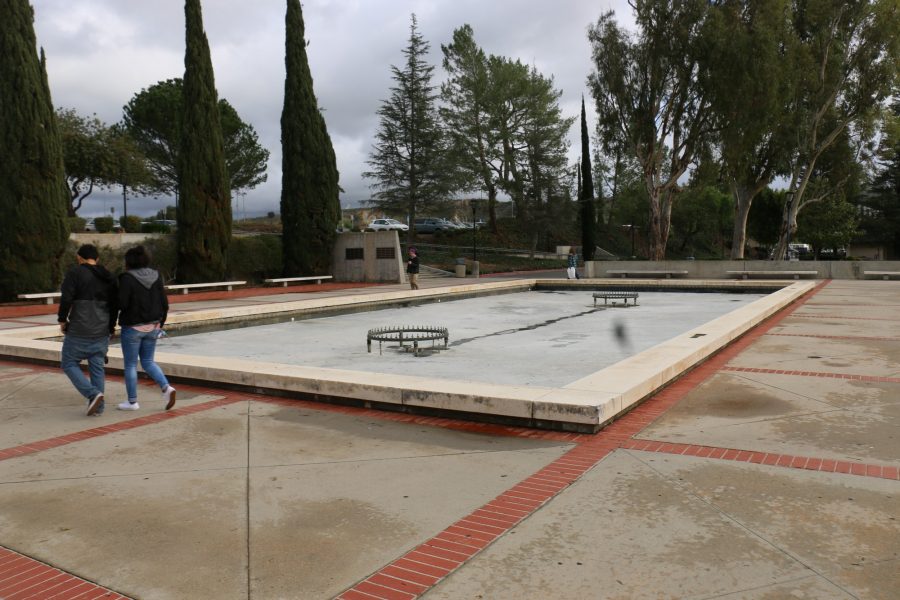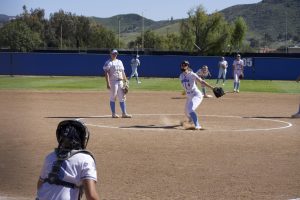Water Conservation on Campus
As a result of efforts to conserve water, the fountain in front of Fountain Hall has been turned off and waterless for the last two years. Photo credit: John Louie Menorca
January 10, 2017
At Moorpark College, efforts have been underway to completely change the way water is used to irrigate the grass, trees, and all other forms of vegetation and agriculture. It may not seem that way because the grass and trees are green on the inside of campus, but the effects are noticeable on the vegetation on the outer rims of the campus and, most notably, the large fountain outside of Fountain Hall having been turned off for the last couple of years.
Heading the water conservation effort here on campus is Brian Sherman, 10-year sprinkler technician and groundskeeper. His aim is to reduce campus water consumption by 25 percent from previous usage in 2013.
“Last year, we saved 24 million gallons in water, but this year, we’ve already saved more than that,” said Sherman. “And our current water consumption is down by 17 percent already from that.”
This initiative comes at a time when California is suffering from an ongoing, severe drought in its fifth recorded year from 2011. Saving the water that we have now is more important than ever.
Looking at the agriculture on or near areas like Raider Walk, the quad area, or even the Big Circle, which is the name large grassy slope that separates the upper and lower areas of the campus, they remain lively and green during this drought as a result of Sherman’s efforts.
Steve Timmons, MC’s Grounds Supervisor, was only on the job for one year when Sherman was hired, and has been by his side since then, aiding Sherman’s initiative.
“When he was hired, at the time, we didn’t have a strong movement towards water conservation,” said Timmons. “But as soon as he could, he went ahead and started researching on ways to save water, even looking at the composition of our soils around here.”
The soil on campus was known to be highly compacted, impeding plant root growth in its soil, and therefore reducing its ability to take up nutrients and water.
One way to fix this, according to Sherman, was to steadily mix composted soil into the soil composition, which will improve the soil structure, increasing nutrients for plants, and very importantly, use less water as a result of greater moisture retention.
Using compost in the soil is only one of many ways that can help our campus save on water.
Sherman’s ongoing plans for changing water consumption on campus includes re-working sprinkler systems for better efficiency and coverage, replacing plants with types that are drought-resistant, and constantly improving the system that tracks and appropriates the usage of water.
Already, one notable area on campus is undergoing these changes, which is the east entrance leading into the second floor of the Academic Center building.
The agriculture in front of the entrance is currently undergoing a battery of changes, including the replacement of old, inefficient pop-up sprinkler systems with an in-ground network of water-drip hoses, which use less water and ensures even delivery to the plants around it.
However, don’t expect these current results to be immediate. The proposed changes are expected to be put into place over the next few years, and onward.
“We have only just improved the efficiency of our sprinklers and water consumption monitors,” said Sherman. “But there’s always room for more improvement. We’ll be looking for ways and methods to be more efficient with our water usage across the board.”









